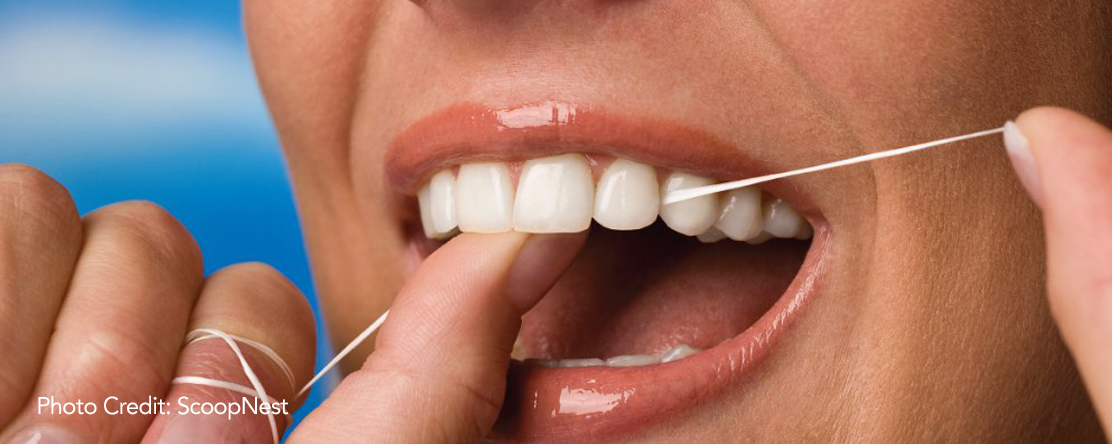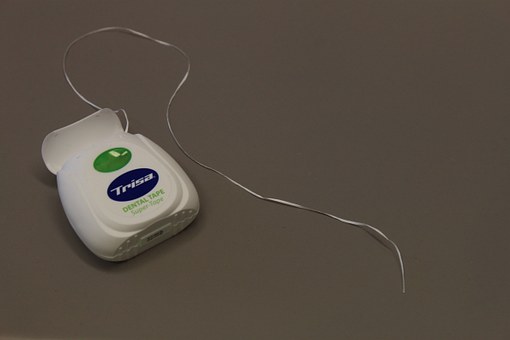
In the News
Oral-B Glide Floss Tied to Potentially toxic PFAS Chemicals, Study Suggests
-
Focus Areas
Environmental Health -
Programs
Child Health and Development Studies

 Using Oral-B Glide dental floss might be associated with higher levels of toxic PFAS chemicals in your body, according to a new peer-reviewed study of consumer behaviors potentially linked to the substances.
Using Oral-B Glide dental floss might be associated with higher levels of toxic PFAS chemicals in your body, according to a new peer-reviewed study of consumer behaviors potentially linked to the substances.
PFAS, or per- and polyfluoroalkyl substances, are potentially harmful chemicals often used for their water and grease resistance.
The study, which aimed to explain how these chemicals enter the human body, was published Tuesday in the Journal of Exposure Science & Environmental Epidemiology and comes from the Silent Spring Institute in Newton, Massachusetts, and Public Health Institute in Berkeley, California.
Researchers found higher levels of PFHxS (perfluorohexanesulfonic acid), a PFAS, in women who flossed with Oral-B Glide compared to those who didn’t.
“This is the first study to show that using dental floss containing PFAS is associated with a higher body burden of these toxic chemicals,” lead author Katie Boronow, a scientist at Silent Spring, said in a statement.
Among the other behaviors in the study that were associated with higher PFAS levels: Having stain-resistant carpet or furniture and living in a city with drinking water contaminated by a PFAS.
Researchers also found that African-American women who ate food from coated cardboard containers had higher PFAS levels for four of the chemicals studied compared to those who didn’t.
According to the U.S. Environmental Protection Agency, “there is evidence that exposure to PFAS can lead to adverse human health effects.”
Floss, other hygiene products, nonstick cookware, fast food wrappers and microwave popcorn bags are among the various products the Centers for Disease Control lists as potentially containing PFAS.
Exposure to certain PFAS chemicals, like perfluorooctanoic acid (PFOA) and perfluorooctanesulfonic acid (PFOS), has ties to cancer, ulcerative colitis in adults and thyroid disease in children, among other health problems, researchers said.
According to the EPA, PFAS chemicals have been used in products in the United States since the 1940s. The agency also says the chemicals accumulate in the body over time.
“As a result, as people get exposed to PFAS from different sources over time, the level of PFAS in their bodies may increase to the point where they suffer from adverse health effects,” the EPA website states.
The study consisted of 178 middle-aged women, about half of who are African-American, from the Public Health Institute’s Child Health and Development Studies, which looks at multigenerational impacts of environmental chemicals and other factors on disease.
Researchers measured levels of PFAS in the women’s blood and later interviewed them about certain behaviors that might lead to exposure — like eating food from coated cardboard containers and nonstick cookware or having stain-resistant carpet and furniture.
Oral-B Glide flosses were among the 18 floss products studied. Scientists said they tested the various products for fluorine, an indicator of the PFAS polytetrafluoroethylene, or PTFE. Six of the products had fluorine, including the Oral-B Glide products and others marked with “compare to Oral-B Glide.”
“The good news is, based on our findings, consumers can choose flosses that don’t contain PFAS,” Boronow said.
Continue reading the full article in USA Today.
This study was also covered by several other outlets, including:
Originally published by USA Today
More Updates
Work With Us
You change the world. We do the rest. Explore fiscal sponsorship at PHI.
Support Us
Together, we can accelerate our response to public health’s most critical issues.
Find Employment
Begin your career at the Public Health Institute.



